
2020 Service Vehicle Report: Fuel Economy on Trend
June 18, 2020 | By Jil McIntosh
When electric vehicles do arrive, operators are going to have to weigh them carefully, because they pose as many questions as they answer.
 Just as with their consumer vehicles, automakers are tweaking their trucks and commercial vehicles to help improve their fuel efficiency. This has always been as important a consideration as capability, but now you have even more options for your selections.
Just as with their consumer vehicles, automakers are tweaking their trucks and commercial vehicles to help improve their fuel efficiency. This has always been as important a consideration as capability, but now you have even more options for your selections.
In addition to the larger diesels in their heavy-duty trucks, Ford, GM and Ram all offer smaller-displacement diesels in their half-ton trucks. These provide more lower-end power, but with better published fuel figures than comparable gasoline engines.
Depending on the automaker, some gas engines include fuel-saving technologies such as cylinder deactivation, which shuts off some of the cylinders when full power isn’t needed. Some companies are offering smaller-displacement turbocharged engines, for the inherent fuel savings of a small engine but with larger-displacement power as needed (but a little more on that below). And more multi-speed transmissions are available, right up to 10 speeds for extra economy.
No one offers a full gas-electric hybrid work vehicle, but Ram has a mild hybrid system available on its half-ton pickup, which primarily improves its fuel economy.
Fully electric vehicles are still in the future, but Ford is promising an electric F-150 pickup, as well as an electric Transit van by 2022. GM is working on an all-electric Chevrolet pickup truck. Mercedes-Benz has electric versions of its Sprinter and Metris in Europe, although they’re not planned for sale in Canada, at least in the foreseeable future.
But even when electric vehicles do arrive, operators are going to have to weigh them carefully, because they pose as many questions as they answer. You lose your gas or diesel bills, and they require a lot less maintenance, but you have to factor in how long they take to recharge and where you’ll do it. As well, their maximum driving range is usually calculated under mostly-favourable conditions. In addition to battery-sapping factors that already apply to consumers who drive electric cars, such as cold temperatures or hilly terrain, electric work vehicles will be further burdened with payload—and you might not know exactly how much that’ll take out of your range until you buy and drive one. There’s going to be a learning curve when these trucks come to market.
Of course, even with conventionally-fuelled vehicles, you have to factor in all the pros and cons when purchasing. Diesel trucks tend to hold their value, but they cost more to purchase and maintain, and are better suited to high-mileage buyers who can amortize those extra costs. And small turbocharged engines are touted by manufacturers for their fuel savings, but they’re most economical when they’re lightly worked. They can get thirsty when you’re towing or hauling, and that can add up significantly over the long run in a hard-working vehicle. You might be better off with a larger, naturally-aspirated engine, and leave the little turbos for those who buy trucks to occasionally haul their stuff to the cottage.
For lighter-duty work, such as service calls, you might also consider downsizing. Automakers now offer a wide variety of compact and midsize vans and trucks. Along with lower costs, these can also access jobs where a full-size doesn’t always fit, such as in underground garages or other tight quarters.
Following is a basic roundup of what’s on offer for 2020.
____
FORD
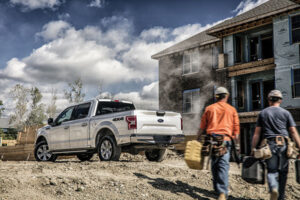
Ford F-150
The F-150 offers six engines, including a 3.0-litre V6 turbodiesel that makes 440 lb-ft of torque and is now offered in the XLT trim level. The Super Duty F-250, F-350 and F-450 come with 6.2-litre or 7.3-litre V8 gasoline engines, along with an available 6.7-litre Power Stroke turbodiesel that makes 1,050 lb-ft of torque.
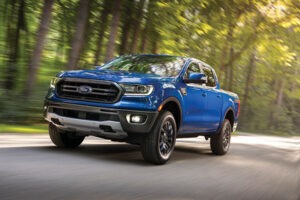
Ranger
The midsize Ranger comes in SuperCab or SuperCrew configuration. Both use a 2.3-litre four-cylinder EcoBoost (turbocharged) engine, make 310 lb-ft of torque, and in 4×4 only. With an optional towing package, the Ranger can tow up to 7,500 lbs.
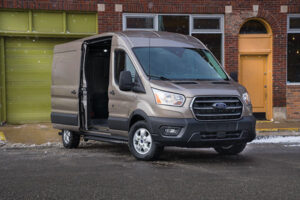
Transit
For 2020, the full-size Transit van is available in rear- or all-wheel drive, and an optional power sliding door. It comes in cargo or crew van; with two wheelbases, two roof heights and three lengths; and the choice of a naturally-aspirated or turbo 3.5-litre V6.
The compact Transit Connect comes with a 2.0-litre four-cylinder, but fleets can order a 2.4-litre four-cylinder. Max. payload is 1,550 lbs, and it will tow 2,000 lbs.
___
RAM
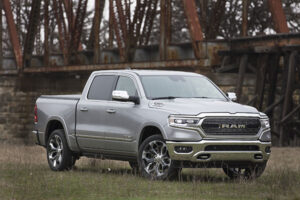
RAM 1500
The Ram 1500 uses a mild hybrid system called eTorque, standard on the 3.6-litre V6 and optional on the 5.7-litre V8. It can’t run on electricity alone, but provides electric torque to the gas engine on acceleration for smoother operation and fuel efficiency. It self-charges, no plug-in. The V8 gets 1.2 L/100 km better fuel economy with it, but it can be a pricey option.
The 1500 also offers a 3.0-litre V6 turbodiesel making 480 lb-ft of torque.
The Ram Heavy-Duty 2500 and 3500 use a 6.4-litre V8 gas engine, or regular or high-output 6.7-litre inline six-cylinder Cummins turbodiesel making up to 1,000 lb-ft of torque.
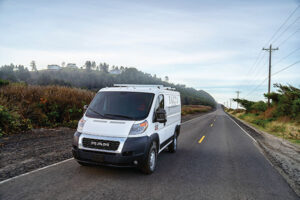
ProMaster
The full-size ProMaster van comes in three wheelbase lengths, regular or extended body, two roof heights, and in 1500, 2500, and 3500 configuration. It can tow a maximum of 6,800 lbs and has a 7,680-lb maximum payload. Unique among full-size vans, it’s front-wheel drive, for a low step-in height.
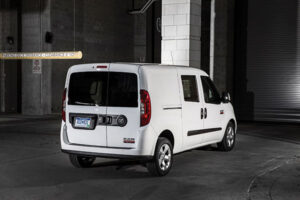
ProMaster City
The compact ProMaster City van uses a 2.4-litre four-cylinder, and has a maximum payload of 1,883 lbs and towing capacity of 2,000 lbs.
__
GM
Comparable Chevrolet and GMC trucks and vans have different trim levels and features, but share their drivelines.
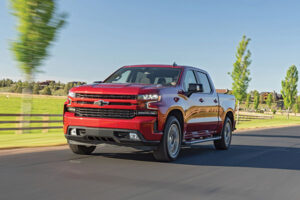
Silverado
The Chevy Silverado and GMC Sierra 1500 models come with six engine choices, including a 3.0-litre inline-six diesel that makes 460 lb-ft of torque. Depending on the gasoline engine, ranging from a turbocharged four-cylinder to a 6.2-litre V8, you get either Active Fuel Management, which shuts off specific cylinders, or Dynamic Fuel Management, which uses varying shut-off patterns for even more gas savings.
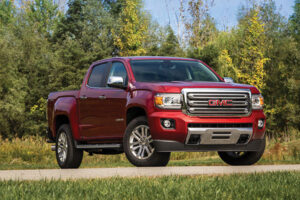
Canyon
The Silverado and Sierra heavy-duty trucks are all-new for 2020, with 6.6-litre V8 gas engine, or a 6.6-litre Duramax V8 engine making 910 lb-ft of torque. Maximum towing capacity is 35,500 lbs.
The midsize Chevy Colorado/GMC Canyon comes with a four-cylinder, V6, or class-exclusive 2.8-litre four-cylinder turbodiesel that makes 369 lb-ft of torque. With the diesel, it can tow up to 7,700 lbs.
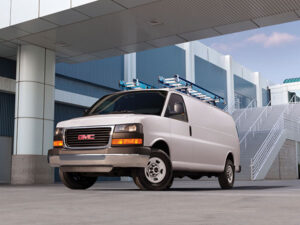
Savana
The full-size Chevrolet Express/GMC Savana cargo van comes with a V6, V8, or 2.8-litre four-cylinder diesel, and a maximum payload of 4,402 lbs.
______
NISSAN
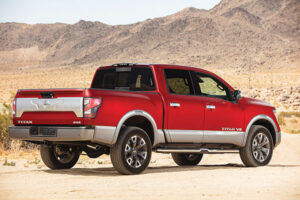
Titan
Nissan updates its full-size Titan pickup for 2020, now available only as a Crew Cab 4×4 with 5.6-litre V8 with nine-speed automatic. It’s advertised as 400 horsepower and 413 lb-ft of torque, but that’s on premium fuel. On regular it makes 390 hp and 394 lb-ft.
The larger Titan XD, which Nissan slots between a half-ton and heavy-duty, uses the same 5.6-litre V8, but loses last year’s optional V8 Cummins diesel.
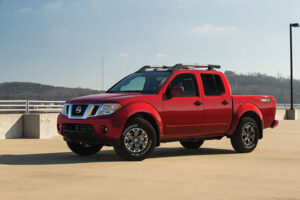
Frontier
The midsize Frontier pickup is eventually getting a complete makeover, but for now, it looks the same but carries the upcoming new model’s 3.8-litre V6 with nine-speed automatic. That should improve fuel consumption over the previous 4.0-litre V6.
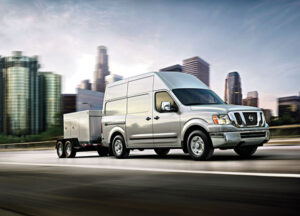
NV Cargo Van
The full-size NV cargo van comes in standard- or high-roof configuration, and with 4.0-litre V6 or 5.6-litre V8. Maximum payload is 3,850 lbs and towing is 9,400 lbs. The compact NV200 van uses a 2.0-litre four-cylinder and offers payload up to 1,480 lbs.
_______
HONDA
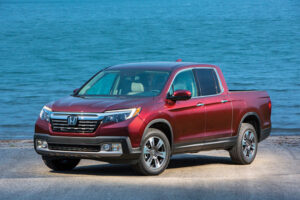
Ridgeline
Many don’t think of the SUV-based Ridgeline as a “real truck,” but it has numerous features for light-duty service, including a locking in-bed trunk and lots of interior storage. It uses a 3.5-litre V6 with all-wheel drive, and with maximum 5,000-lb towing and 1,570-lb payload capacity.
______________
MERCEDES-BENZ
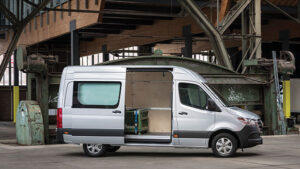
Sprinter
The full-size Sprinter comes in cargo or crew configuration, and in rear- or four-wheel drive. The 1500 comes with a 2.0-litre four-cylinder turbocharged engine, while the 2500, 3500, 3500XD and 4500 use a 3.0-litre V6 diesel making 325 lb-ft of torque.
The Sprinter comes in two wheelbases, with regular or extended body, and standard or high roof. Depending on the model, payload is up to 6,768 lbs.
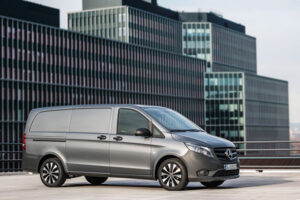
Metris
The Metris is the only midsize van on the market. It uses a 2.0-litre four-cylinder turbocharged engine and comes in two wheelbases, with a maximum payload of 2,491 lbs and 5,000-lb towing capacity.
______
TOYOTA
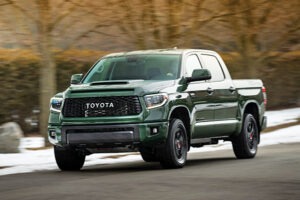
Tundra
The full-size Tundra pickup comes in Double Cab or Crew Cab, and all models use a 5.7-litre V8 that makes 401 lb-ft of torque. The Double Cab has a top towing capacity of 10,000 lbs and 1,709 lbs payload, while the Crew Cab can pull up to 9,200 lbs and haul up to 1,567 lbs.
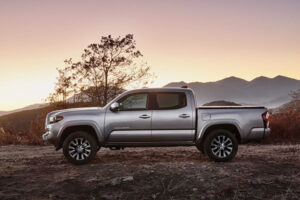
Tacoma
The midsize Tacoma comes in Access or Double Cab, but only in 4×4 configuration. All use a 3.5-litre V6 that makes 265 lb-ft of torque. Maximum towing capacity is 6,504 lbs, and maximum payload is 1,146 lbs.
Jil McIntosh is an automotive writer and reviewer with a specialty in trucks and commercial vehicles. McIntosh writes for numerous outlets including the National Post and AutoTrader.ca, and is a member of the Automobile Journalists Association of Canada (AJAC). Her work can be found at WomanOnWheels.ca.




